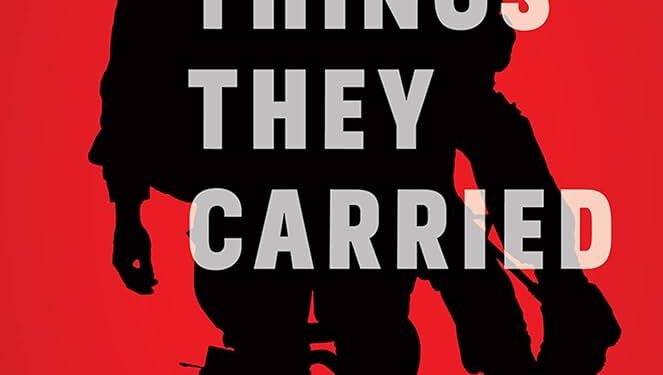Summary of “The Things They Carried”:
The story begins with a list of items that the soldiers in the Alpha Company carried with them during the Vietnam War. The narrator, Tim O’Brien, details the physical and emotional weight each soldier bears. The things they carry go beyond the tangible items like weapons, ammunition, and gear; they also carry intangible burdens such as fear, memories, and the weight of loss.
The battalion leader, Lieutenant Jimmy Cross, is in love with a girl named Martha and is carrying letters from her. Though his duties as a leader frequently take his thoughts, he envisions a future with her. After a soldier called Ted Lavender dies one day, Cross decides he must concentrate on the urgent realities of the battle and destroys Martha’s correspondence.
The story then delves into the histories of the other soldiers and the gear they are carrying. Ted Lavender carried tranquilizers; Kiowa carried a volume of the New Testament; and Norman Bowker had a diary. These objects’ weight comes to represent the mental and physical weights that every soldier bears.
Also Read-
The Tell-Tale Heart Introduction, Characters and Themes
The story also introduces the concept of “story-truth” versus “happening-truth.” O’Brien reflects on the necessity of altering details in war stories to convey the emotional truth, even if the factual details are not entirely accurate. This theme runs throughout the entire collection, emphasizing the blurred line between reality and storytelling.
The narrative circles back to Jimmy Cross, who reflects on the death of Ted Lavender and the weight of responsibility he carries as a leader. Cross understands the profound impact of the war on the soldiers and grapples with the guilt of Lavender’s death.
In the closing section, the narrator Tim O’Brien reflects on the nature of storytelling and truth. He acknowledges that while the details of war stories may be altered, the emotional truth remains intact. The burdens carried by the soldiers, both tangible and intangible, define their experiences and shape the narrative.
Themes:
- Burden and Weight: The physical and emotional burdens that soldiers carry serve as a central theme. These burdens symbolize the psychological weight of war and its lasting impact on individuals.
- Love and Longing: Lieutenant Cross’s love for Martha and the soldiers’ connections with their past lives highlight the theme of love and the longing for normalcy amid the chaos of war.
- Storytelling and Truth: The narrative explores the blurred line between “story-truth” and “happening-truth,” emphasizing the subjective nature of storytelling in conveying the emotional truth of war.
- Guilt and Responsibility: Jimmy Cross grapples with guilt and the weight of responsibility for the death of Ted Lavender, showcasing the moral dilemmas faced by soldiers in war.

Significance:
“The Things They Carried” is a powerful exploration of the Vietnam War experience, capturing the complex emotions, moral dilemmas, and burdens carried by soldiers. Tim O’Brien’s storytelling prowess and his ability to convey the visceral and emotional truths of war have made this collection a classic in contemporary American literature. The title story, in particular, sets the tone for the entire collection, examining the weight of war on the human psyche and the transformative power of storytelling.














